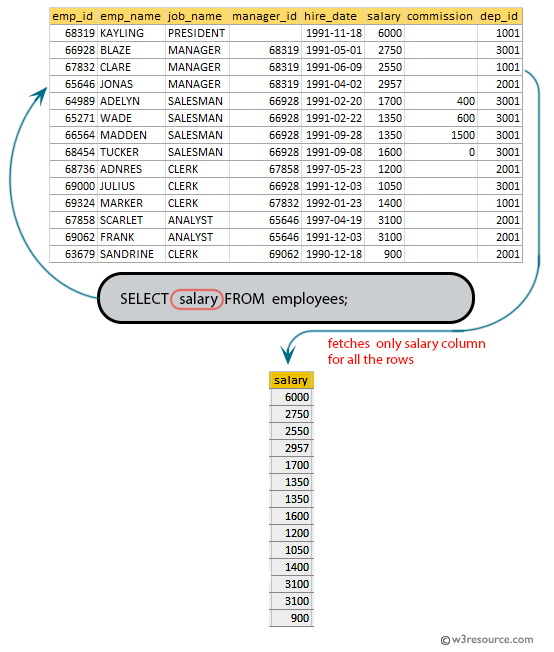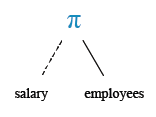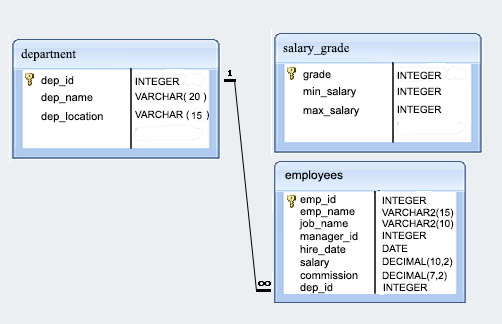SQL Exercise: Find the salaries of all employees
[An editor is available at the bottom of the page to write and execute the scripts.]
2. From the following table, write a SQL query to find the salaries of all employees. Return salary.
Sample table: employees
Pictorial Presentation:

Sample Solution:
SELECT salary
FROM employees;
Sample Output:
salary --------- 6000.00 2750.00 2550.00 2957.00 3100.00 3100.00 900.00 1700.00 1350.00 1350.00 1600.00 1200.00 1050.00 1400.00 (14 rows)
Explanation:
The said query in SQL that retrieves only the "salary" column from the 'employees' table.
The query returns a result set that includes all the values stored in the "salary" column for all rows of the 'employees' table.
Relational Algebra Expression:

Relational Algebra Tree:

Go to:
PREV : Display all the information of the employees.
NEXT : Display the unique designations for the employees.
Practice Online
Sample Database: employee

Have another way to solve this solution? Contribute your code (and comments) through Disqus.
What is the difficulty level of this exercise?
Test your Programming skills with w3resource's quiz.
